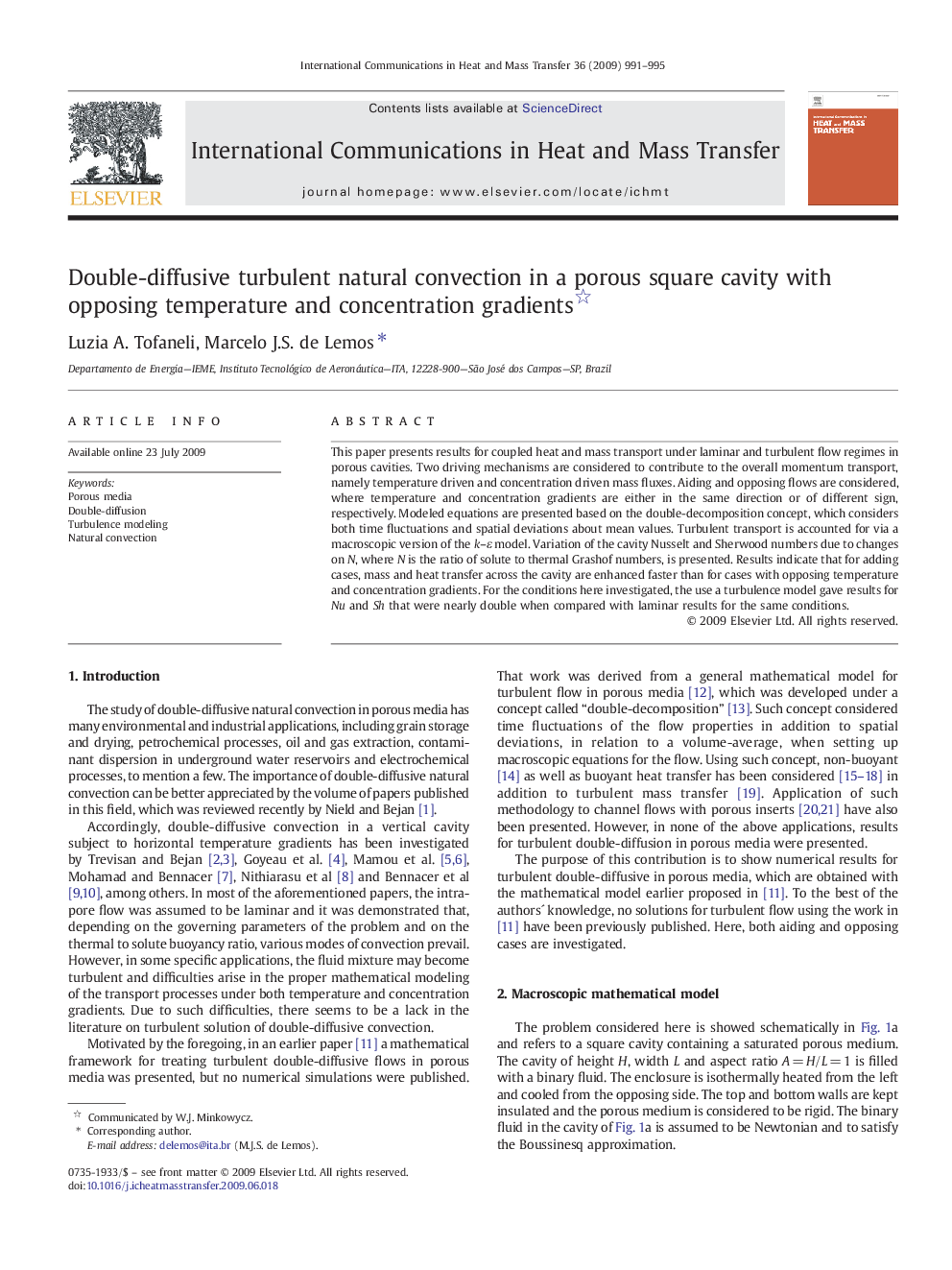| Article ID | Journal | Published Year | Pages | File Type |
|---|---|---|---|---|
| 654026 | International Communications in Heat and Mass Transfer | 2009 | 5 Pages |
This paper presents results for coupled heat and mass transport under laminar and turbulent flow regimes in porous cavities. Two driving mechanisms are considered to contribute to the overall momentum transport, namely temperature driven and concentration driven mass fluxes. Aiding and opposing flows are considered, where temperature and concentration gradients are either in the same direction or of different sign, respectively. Modeled equations are presented based on the double-decomposition concept, which considers both time fluctuations and spatial deviations about mean values. Turbulent transport is accounted for via a macroscopic version of the k–ε model. Variation of the cavity Nusselt and Sherwood numbers due to changes on N, where N is the ratio of solute to thermal Grashof numbers, is presented. Results indicate that for adding cases, mass and heat transfer across the cavity are enhanced faster than for cases with opposing temperature and concentration gradients. For the conditions here investigated, the use a turbulence model gave results for Nu and Sh that were nearly double when compared with laminar results for the same conditions.
